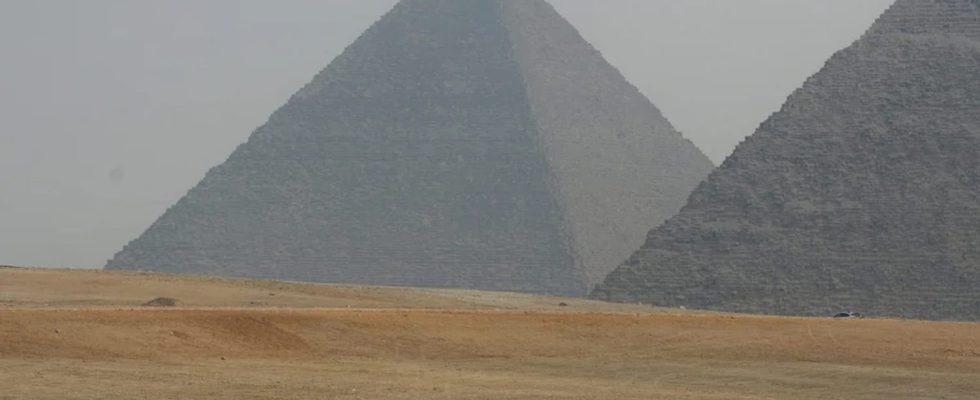The great mystery of the construction of the pyramids could be solved thanks to soil analysis carried out from space. It reveals that there may have been a maritime highway at the time…
The mystery of how the pyramids were built may finally be solved thanks to the discovery of researchers who examined the pyramid region from space. The study’s author, Eman Ghoneim, and her teams used radar satellite data to analyze the Nile Valley from space. Because radar waves can penetrate the ground, the images revealed the presence of a dry riverbed that winds through desert and farmland for about 100 kilometers. Hundreds of meters wide, this enormous river is now dry, but could have provided transportation for the colossal quantities of materials and workers needed to build these iconic monuments thousands of years ago .
Running from Faiyum to Giza, the now-unused waterway passes 38 different pyramid sites and has therefore been dubbed the Ahramat Branch (meaning Pyramids Branch in Arabic) by researchers. The team now plans to analyze soil samples from the ancient river bed to determine whether this river was active during the Old and Middle Kingdoms (3,700 to 4,700 years ago), when the pyramids were been built.
Without this confirmation, it is impossible to draw firm conclusions, although there are a number of clues that suggest the river did indeed play a role in the construction of the monuments. For example, Ghoneim explained that most of these pyramids had a processional path that usually ended at what we call a valley temple, which is like an ancient port or port.
If the researchers’ theory, presented at the 13th International Congress of Egyptologists earlier this year, is confirmed, it would mean that the region could have been served by a large river capable of supporting ambitious construction projects. Most of the valley temples are located exactly on the bank of the branch found by researchers. In addition to providing new insights into the construction of the pyramids, exploring the ancient branches of the Nile could also help archaeologists uncover the secrets of ancient Egypt by helping to locate other lost sites. Over time, the The main course of the Nile has migrated – in some areas east, in others west – as rivers change over time.
